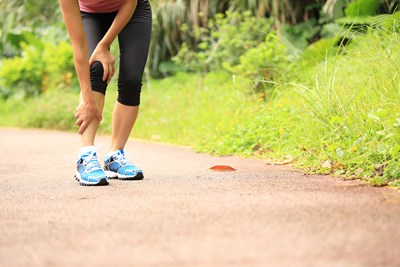Even though it is sometimes used to simply describe pain in the shin, “shin splint” is a catch-all term that can be caused by a wide variety of problems. Although it could be caused by stress to your tibia (the long bone in the front of your shin), it could also be a purely muscular problem and have nothing to do with your bones at all. Because of these discrepancies, there are many myths about the nature and cause of shin splints. Here are some of the most common misconceptions.
A shin splint occurs when your muscle pulls away from the bone.
Although this can happen in rare cases, this is typically not what causes the pain of shin splints. Usually, shin splints are caused by muscular weakness and fatigue in your shins. Even though your calf muscles may be strong enough to carry you long distances, unconditioned runners are unable to run many miles without careful training because other supporting muscles are not strong enough to make it and will end up giving out. When this happens, this is what causes the pain associated with shin splints. If you ignore this pain and keep running anyway, you could potentially cause more serious damage.
Shin splints are stress fractures in the shin.
This is not usually true either. However, stress fractures are a common complication for shin splints, especially in women. This is because women’s bone density is typically not as strong as men’s. Sometimes minute cracks can form in the bones of your shin from excessive running on hard surfaces, which will cause the pain of shin splints. These cracks are usually able to heal on their own with rest. However, if you do not allow your body to rest, these small cracks could eventually lead to stress fractures, which are much more painful and take much longer to heal.
Physical activity will help your shin splints heal faster.
Unlike most leg injuries, exercising will not help shin splints heal faster. You have to give your body time to rest and heal, or else you could cause more major problems to go wrong in your shins.
You should stop exercising altogether when you have shin splints.
Although you should give yourself a few days to rest when you start feeling the pain of shin splints, once the pain subsides, trying other types of exercises that don’t put stress on your shins is not a bad idea. If running caused your shin splints, try swimming or bicycling instead. It is recommended that you should give yourself two weeks after experiencing shin splint pain before you resume any activities that would put any stress on your shins again.
You should stretch before you run to prevent shin splints.
Static stretching before you run can actually cause more strain to your muscles and it might even slow you down. Instead of stretching to try to warm up, try other activities that will get more oxygen flowing to your muscles and elevate your heart rate gradually. Start by walking and trotting, swinging your arms, and shrugging your shoulders.




